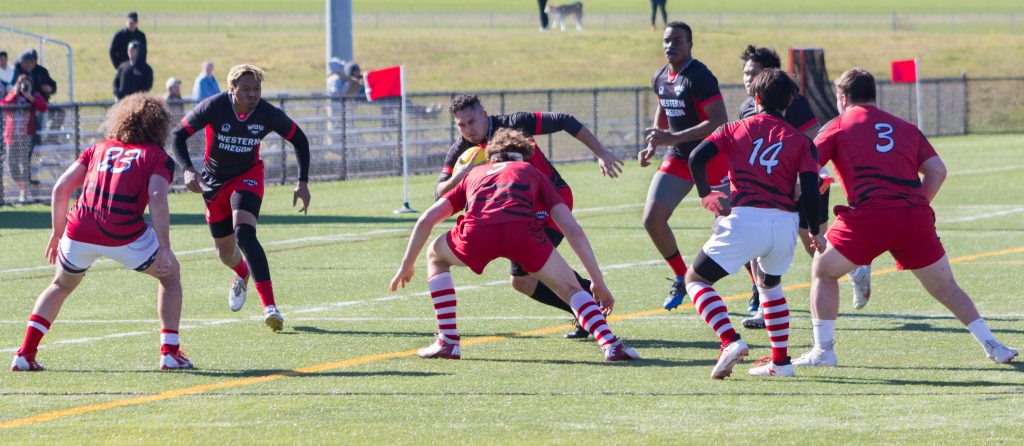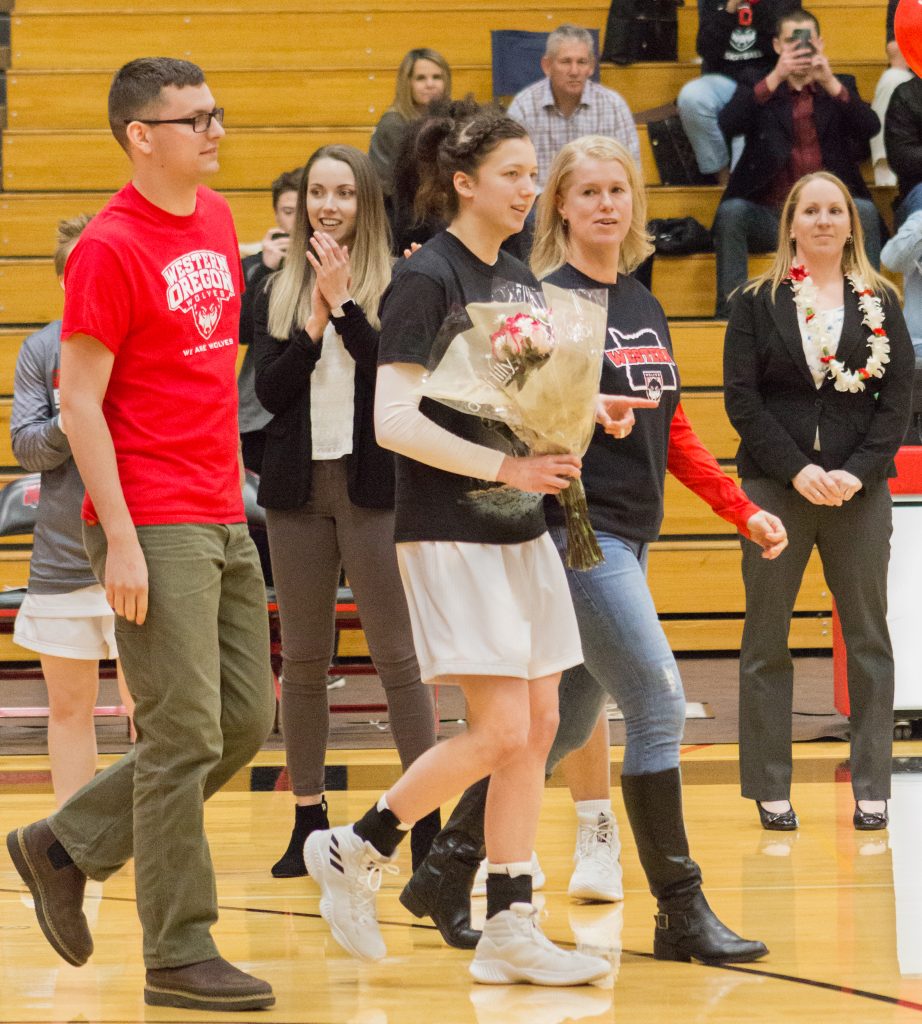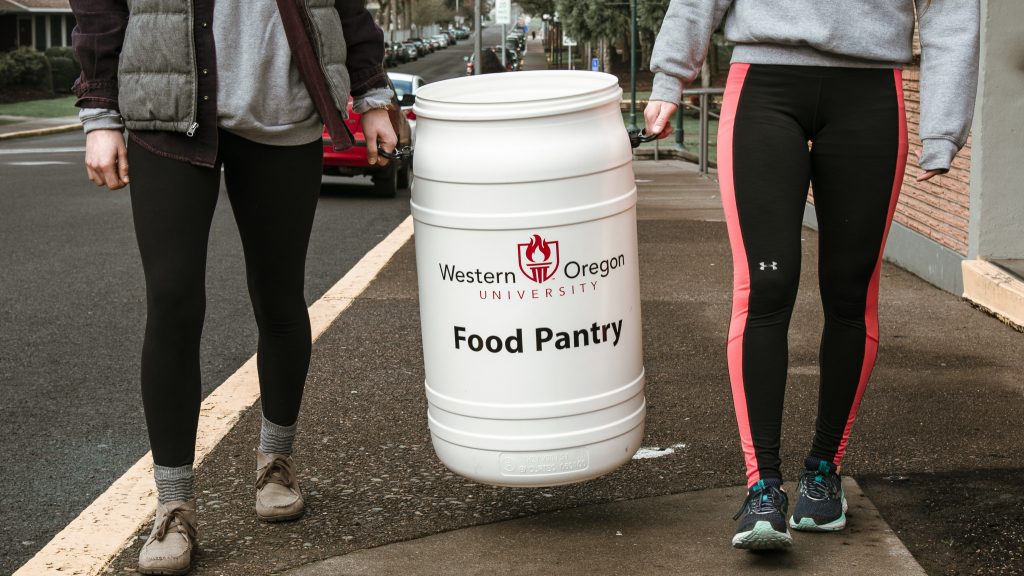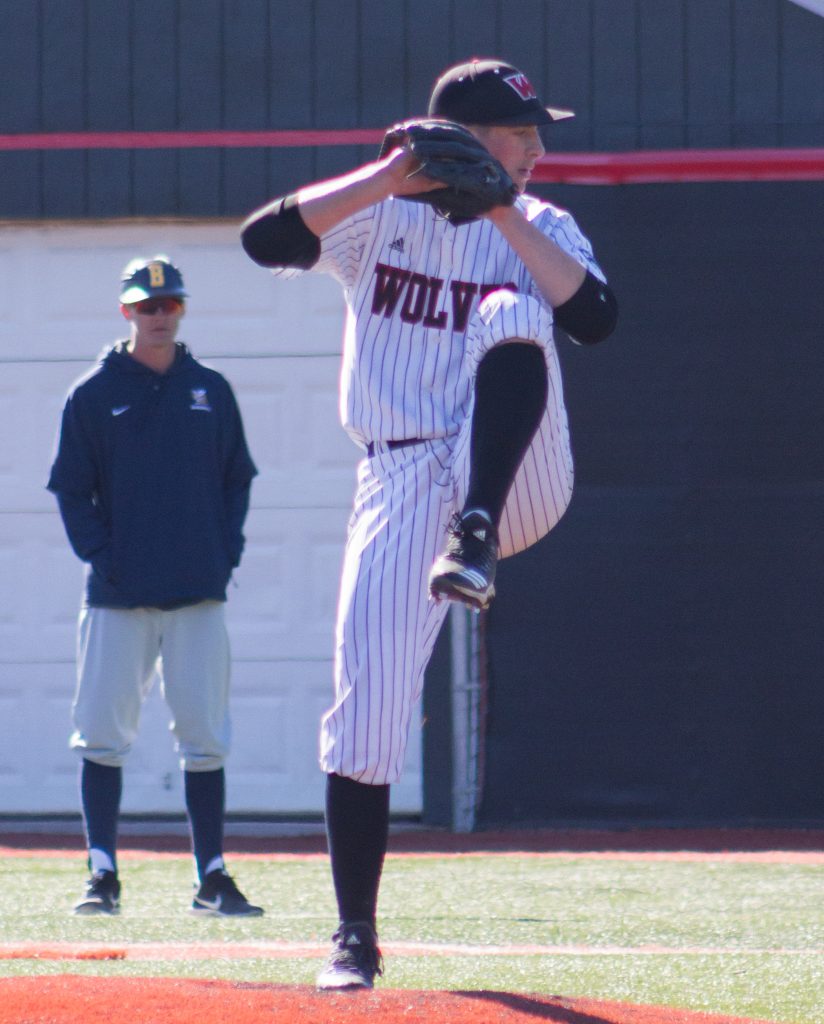
Lake Larsen | Sports Editor
For the final time before the Challenge Cup, the Wolves took the field for back-to-back home matches on March 2 and 3. Their first of the two opponents was Eastern Washington University. Due to the Eagles being short on players, the Wolves agreed to adjust the match from the typical 15 vs 15 contest to only 10 vs 10. But regardless of the numbers, the Wolves were ready.
From the opening whistle it became clear that this game was far from typical rugby.
The Wolves blew past the Eagles and were off to the races on a seemingly regular basis. This supposed rugby match quickly became a track meet as both sides were able to make a single tackler miss and sprint to the goalline for a try.
As the game continued on, the only thing running faster than the clock was the score. With the Wolves on top by an amazing twenty points, the scoreboard began to look like that of a basketball game. Players could be heard laughing and joking with each other as the points kept piling on.
By the final whistle, Western put up an astonishing 73 points. Eastern Washington had put up a valiant fight as they finished with 53, leaving the teams to combine for a total of 126 points — an unofficial record for the club. But now the Wolves looked forward to their next opponent, Pacific University.
“We know we’ll have a really physical game” commented senior criminal justice major Chris Davis. “They’re a well conditioned team and communicate well so it will be a good game.”
As the Wolves stepped back onto the field for the second time, it became clear that today’s match would pale in comparison to the previous. The once high-scoring heroics of the offense would have to shift to hard-hitting defense for the Wolves to win.
No team had an advantage over the other as both sides stood their ground. The defensive powers collided over and over like the rumble of thunder. But finally, a crack a lightning struck the Wolves.
A firm Western pass out to the wing was intercepted by an opposing Boxer. The Wolves quickly changed their direction and began their pursuit, but it was too late. Pacific found its way onto the scoreboard first, leading 0-7.
The first half wore on, deprived of another score. Both teams knew that whichever side follied first would suffer. With only 11 minutes left to play, a slick juke followed by a hard cut let to a Boxer breakaway and another score. The Wolves now trailed 0-14.
With only a couple minutes remaining before the half, Western was in desperate need of a score. Thrice before the Wolves had seen their offensive push foiled by Pacific, but with only two minutes remaining, the Wolves caught a break.
Throwing down a would-be tackler with a violent stiff arm, senior Matthew Cornish broke away and flew down for a try. But with a nearly 40-yard conversion try falling short, the Wolves still trailed by two scores, 5-14.
With the second half underway, the abundance of scoring from the previous day showed to be more of a liability than an asset. Out of breath, the Wolves were unable to match pace with the well-rested Boxers. Tries began to pile up on the Wolves as they seemed to have no answer. In the echo of the final whistle, Western eked their way to one last try and conversion. But the match was all but over with Western having fallen 35-11.
After splitting the weekend 1-1 the Wolves look forward to some much needed rest. With their final regular season games now behind them, they prepare to host the Challenge cup on March 30 and 31.
Contact the author at howlsports@wou.edu
Photo courtesy of Ashlynn Norton








